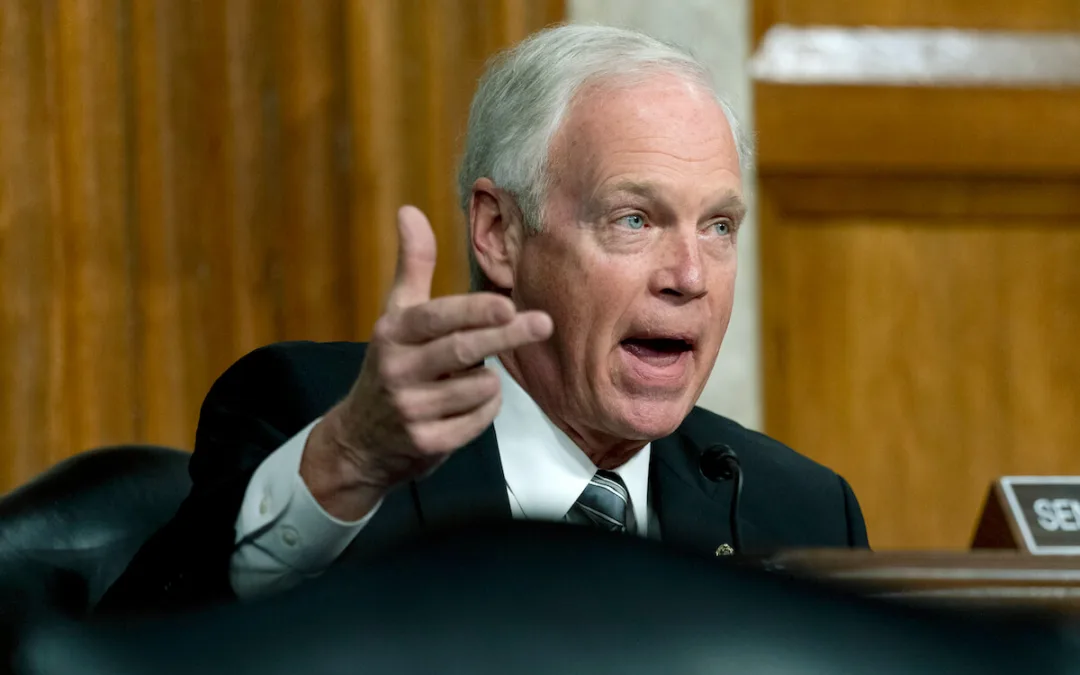
#image_title
#image_title
In many ways Monday was like any other day for Eau Claire teacher Eric Rasmussen as he instructed students in his 11th- and 12th-grade grade English classes, discussing the finer points of course work, showing short instructional videos, and posting assignments.
But this wasn’t just another ordinary day in Rasmussen’s classroom. In fact, the instruction didn’t occur in his Memorial High School classroom at all but instead from his living room, the space where Rasmussen has taught courses for the past two months since schools were shut down because of the coronavirus pandemic.
Since mid-March teachers in Wisconsin and elsewhere across the U.S. have switched from seeing their students in person each weekday to teaching them virtually. Lessons are now taught over computer screens as teachers and students use technology to instruct and learn.
“This is what we do now,” Rasmussen said early Monday afternoon after a morning filled with instruction and meetings. “The classroom is the cornerstone of the job, and without that the job is definitely different.”
As K-12 teachers and students have struggled to adapt to teaching and learning online, they face uncertainty about whether they will be able to safely return to traditional classroom instruction this fall, thanks to coronavirus cases that continue to grow in Wisconsin and across the rest of the country.
Faculty and students at state colleges and those elsewhere also remain in limbo about what the start of next school year will look like. The UW System Board of Regents could decide as soon as next month whether students will return to dormitories and meet with professors in traditional classroom settings, if they will continue online-only coursework, or if their education model will be a hybrid of those formats.
UW System President Ray Cross has said a decision about whether in-person instruction will occur for the fall semester will be made no later than July 10.
Staff and students at K-12 schools are considering similar educational options, making planning for the upcoming school year difficult, educators said.
“Right now there is a lot of uncertainty about what instruction will look like,” Sheila Briggs, deputy superintendent of the state Department of Public Instruction, said of the return to school in the fall. “There are a lot of different options being considered.”
The state Supreme Court ruled last week against the extension of a safer-at-home order through May 26 intended to slow the spread of the virus. That decision signaled the startup of businesses and some other activities, but schools remain closed.
School administrators throughout Wisconsin said they’re struggling to plan for next school year not knowing what to expect because of COVID-19. Ensuring student and staff health and safety will be a challenge in classroom settings if the virus remains prevalent in communities by the fall, they said.
Administrators said they are considering multiple options to educate students and keep them and staff safe, said Pete Ross, chief of operations in the Green Bay school district.
“There are so many options being considered right now,” he said. “There is a lot of uncertainty, so it makes it tough to plan.”
Administrators and teachers said they favor in-person instruction if possible. Teachers “have gone above and beyond” to educate students online since schools were shut down two months ago, Ross said. But he and others said they worry about some students who already struggle in school left even further behind in the online-only model.
“All of the inequities we have had (in schools) are now suddenly exposed and made ever larger,” with the schools shutdown because of COVID-19, said Heather Dubois Bourenane, executive director of the Wisconsin Public Education Network.
Administrators and staff at colleges across Wisconsin are planning how — and to what degree it is possible — to keep students safe if in-person instruction is to happen. Maintaining social distancing could prove especially challenging, they said, and may require multiple sessions of classes to be scheduled, especially for large classes.
Currently, administrators said they are planning for an altered version of the traditional education model in which students, faculty, and other staff would be on campuses.
However, they said, plans call for differences in the normal classroom education process to allow for social distancing and other measures to try to prevent the spread of COVID-19. For instance, they said, the number of students in classrooms at one time could be limited, and traffic patterns would be altered to reduce personal contact as much as possible.
At UW-Stout, administrators are planning for a “modified normal” fall semester in which students and staff will be on campus, but with alterations such as reduced class sizes and multiple procedures to ensure health and safety, said Doug Mell, director of executive communications & external relations.
“This obviously will include alterations to the way we generally operate,” Mell said, noting plans must be flexible because of the changing nature of COVID-19.
UW-Eau Claire has created a Fall Planning Team that is designing how to bring students and staff back to campus safely, incorporating physical distancing and public health measures. The university is working closely with the Eau Claire City-County Health Department “to determine how UW-Eau Claire can best utilize proactive disease-prevention measures to ensure faculty, staff and students are able to return to campus this fall,” said Michael Knuth, associate director of university integrated marketing and communications.
The Fall Planning Team will complete its work no later than June 30, Knuth said.
With uncertainty regarding the fall semester, UW-Eau Claire communication and journalism department chairwoman Jan Larson said she plans to put together an online curriculum for the two reporting classes she had planned to teach students in person in the fall semester. Some other faculty members said they are taking similar measures in case they aren’t able to instruct in person.
Larson acknowledged the many challenges to safely returning to school in the fall, given the highly contagious and potentially deadly nature of COVID-19. Some students and teachers have expressed trepidation about returning to classrooms, she said.
“All over the country we are seeing this is an endeavor fraught with complications,” she said of returning to school amid COVID-19 concerns. “There is not going to be any one approach that works or doesn’t work. Right now everybody is just trying to figure it out.”
Politics

New Biden rule protects privacy of women seeking abortions
Under the new rules, state officials and law enforcement cannot obtain medical records related to lawful reproductive health care with the goal of...

Biden marks Earth Day by announcing $7 billion in solar grants
The Biden administration on Monday announced the recipients of its Solar For All Program, a $7 billion climate program that aims to lower energy...
Local News

Stop and smell these native Wisconsin flowers this Earth Day
Spring has sprung — and here in Wisconsin, the signs are everywhere! From warmer weather and longer days to birds returning to your backyard trees....

Your guide to the 2024 Blue Ox Music Festival in Eau Claire
Eau Claire and art go hand in hand. The city is home to a multitude of sculptures, murals, and music events — including several annual showcases,...



